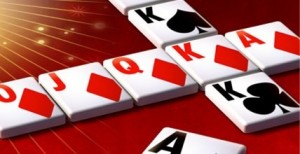A big part of learning the game of poker is becoming acquainted with and knowing how to use special vocabulary associated with the game.
Some poker terms and phrases are obvious in their meaning, while others are less apparent. Refresh your memory!
MTT: Simply stands for Multi-Table Tournament (open number of players; sometimes capped).
SNG: This is a SitNGo (can be a Single Table Tournament or MTT with a fixed number of players).
Seat-Draw: Usually, you can’t choose your seat at a tournament. This will be done by a draw in which all players draw a seat card or get a seat that is automatically drawn by a computer program.
Blinds’ structure: Includes all information about the certain levels of blinds in a tournament and their duration. This mainly determines the duration of the tournament. As a general rule, you can consider a tournament to be finished when there is a total of 30 – 100 Big Blinds left in play.
Example: In any APT Main Event, each player starts with 20.000 Chips. Given an even with 150 entries, you have a total of 3 million chips in play. So, it will be finished somewhere between the blinds’ levels 15.000/30.000 and 50.000/100.000.
Rebuy Tournament: Players can rebuy for a fixed amount of levels. Usually, you can even buy a second stack, if you have a stack equal or less than the starting stack. Add-On: In Rebuy tournaments you can usually buy an add-on at the end of the rebuy period. It typically costs the same amount of money as a rebuy stack, but gives more chips (for example: 1.500 per rebuy/starting stack, 2.000 for the Add-On).
ReEntry Tournament: These are NOT rebuy tournaments. ReEntry means you can reenter the tournament again after you have lost all your chips, for a certain amount of blind levels. The difference in a rebuy MTT are that you must pay the rake again, usually get a new, and there is no option for an Add-On. This format is actually very popular for live tournaments. Deal: Especially when the money steps at a final table get huge with only a few players left, it becomes interesting for them to make a deal. ALL players left have to agree.
Chip Vs ICM Deal: You have two different mathematical models to calculate a deal. Chip-Chop is better for the big stacks, and ICMbetter is better for short stacks (and mathematically more fair in general). If you are HeadsUp, both models will bring you the same result.
Runner Up: The player who finishes in 2nd place.
Satellite: For many, especially higher buyin tournaments, you can play satellites to win the ticket. The buyin is usually 10% of the ticket. Great way for people with smaller bankrolls to get into bigger tournaments.
Swapping: If two (or more) people play the same tournament and share a certain part of their winnings (e.g. 10%), you call this a swap. Staking: In basic terms, staking is an arrangement between a player and a staker in which the staker provides some or all of the player’s bankroll in exchange for some amount of the player’s winnings. As the buyins get higher, more staking is involved.
For example, in the super high rollers all over the globe, with buyins of 50kUS$ and higher, nearly all pros swap and/or play staked.
Poker vocabulary: Do you speak tournament?
Mark up: If a player sells a piece of a tournament, the staker is usually expecting the player to win an average more than the initial buyin. Because of this expectation of profit and the fact that in live poker the player has to pay travel costs as well, the staker usually pays a mark up on the part he bought. If the mark up is 1.2, that means you pay 12% of the buyin for 10% of the prize money. In the WSOP Main Event with a buyin of 10.000 US$, most of the pros sell some of their action. The best players get mark ups of 1.6 or even 2.0 because the expectation of profit is super high. That means the staker pays for 1.600$ to 2.000$ for 10% of the cash. This means the staker expects the player to make an average profit of more than 60-100% to consider it a profitable business.
Bubble Boy: The person who finished the tournament on the Bubble—the last place that does not pay any prize money.
The Independent Chip Model (ICM): One big difference between tournaments and cash games are the value of your chips. In a cash game, any chip has the same (cash) value at any point of time. In a tournament, this is different. Example: In an APT Main Event, you pay 1000+100$ for 20.000 chips. Their value obviously must be 1000$ before the first hand.
Example: Assuming again 150 entries and given the fact that they pay about 25% to the winner for this field size, you would get 42.500$ for having 3 million chips at the end. If you divide both numbers by 150, you get 250$ per 20.000 chips, which means the value of the chips has decreased from the start to the end by 75%. Given this simple example, you can very easily see that any chip that you lose costs you more $-Value than any chip that you’ve won brings you, which is one important conclusion about the ICM. If you are on the final table already, the price jumps are huge. Here, ICM even significantly affects the way you should play your hands to make the maximum $ profit.





